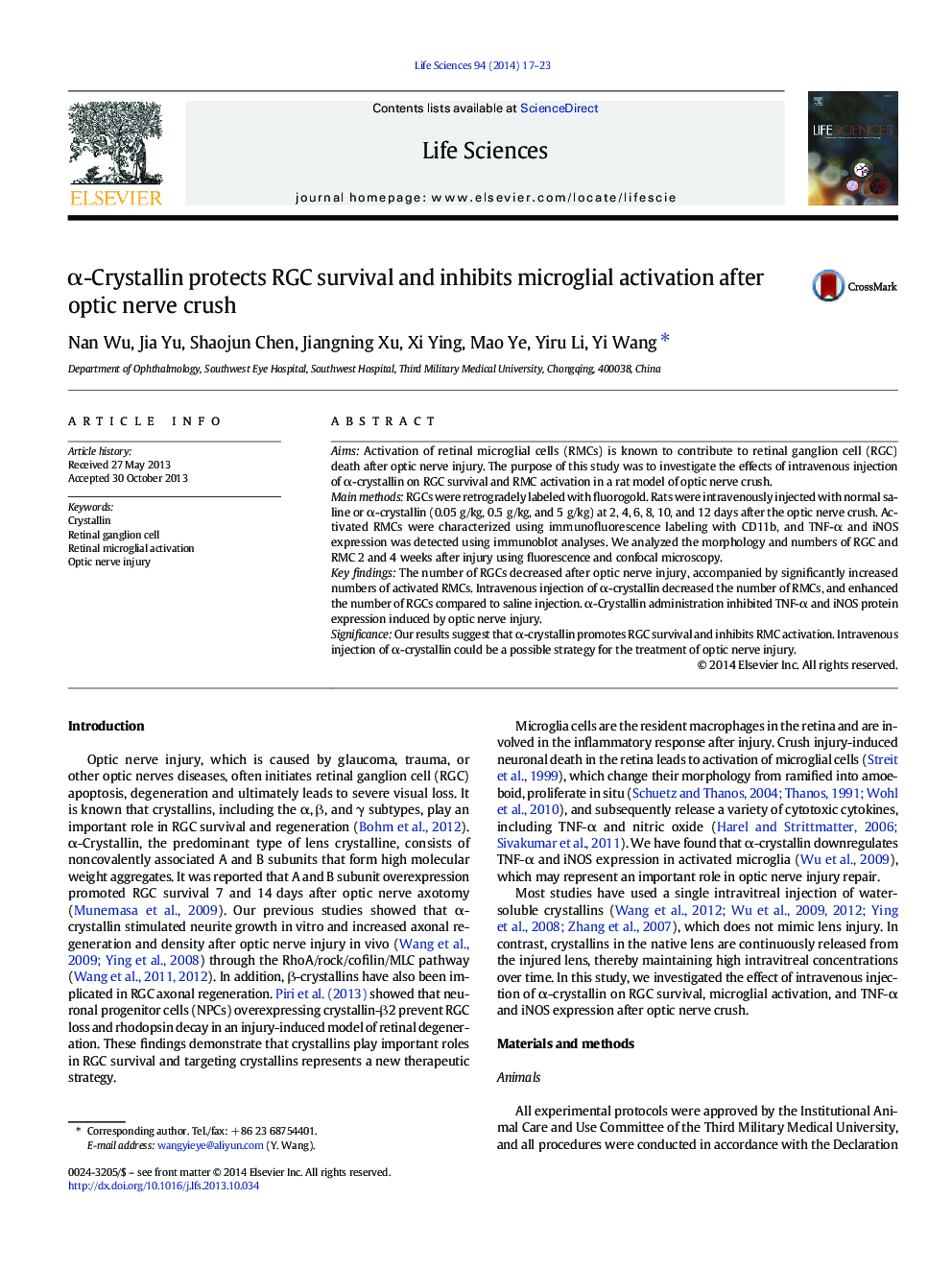| Article ID | Journal | Published Year | Pages | File Type |
|---|---|---|---|---|
| 2551405 | Life Sciences | 2014 | 7 Pages |
AimsActivation of retinal microglial cells (RMCs) is known to contribute to retinal ganglion cell (RGC) death after optic nerve injury. The purpose of this study was to investigate the effects of intravenous injection of α-crystallin on RGC survival and RMC activation in a rat model of optic nerve crush.Main methodsRGCs were retrogradely labeled with fluorogold. Rats were intravenously injected with normal saline or α-crystallin (0.05 g/kg, 0.5 g/kg, and 5 g/kg) at 2, 4, 6, 8, 10, and 12 days after the optic nerve crush. Activated RMCs were characterized using immunofluorescence labeling with CD11b, and TNF-α and iNOS expression was detected using immunoblot analyses. We analyzed the morphology and numbers of RGC and RMC 2 and 4 weeks after injury using fluorescence and confocal microscopy.Key findingsThe number of RGCs decreased after optic nerve injury, accompanied by significantly increased numbers of activated RMCs. Intravenous injection of α-crystallin decreased the number of RMCs, and enhanced the number of RGCs compared to saline injection. α-Crystallin administration inhibited TNF-α and iNOS protein expression induced by optic nerve injury.SignificanceOur results suggest that α-crystallin promotes RGC survival and inhibits RMC activation. Intravenous injection of α-crystallin could be a possible strategy for the treatment of optic nerve injury.
